Internet Connectivity in Puerto Rico Post-Hurricane Fiona
September 28, 2022
Introduction
On September 18, 2022, Hurricane Fiona reached Puerto Rico, almost exactly five years after Hurricane Maria devastated the island in one of the worst natural disasters in recent history. Fiona was the strongest storm to hit the island since Maria in 2017 and brought torrential rains that led to flash flooding across much of Puerto Rico. While Fiona was a Category 1 storm when it reached the island, its 30+ inches of rain have caused tremendous damage, leaving many residents without power or water over a week after the storm.
In the years following Hurricane Maria, a Category 4 storm, Puerto Rico’s power grid has been unreliable at best, with frequent outages, causing intermittent shutdowns of schools, workplaces, and hospitals.
Residents remain frustrated with LUMA Energy; the privatized organization took over power distribution and transmission networks (a.k.a. “the grid”) from the Puerto Rico Electric Power Authority (PREPA) in June 2021. While LUMA is responsible for operating and maintaining the grid going forward, neglect of the aging transmission and distribution infrastructure has long been an issue–one that Hurricanes Maria and Fiona have widely exposed.
Below, we’ll examine the effects of Hurricane Fiona on Internet connectivity in Puerto Rico. We discovered that consumer networks appeared to be most heavily impacted from the storm, while university and government-related hosts maintained somewhat more consistent uptime.
A broad look at connectivity

Host count in Puerto Rico pre- and post-Fiona. The outlined area spanning September 18 and 19 represents when Fiona made landfall in Puerto Rico.
On Saturday, September 17, there were a total of 80,951 hosts from Puerto Rico-based autonomous systems (ASes) online. By Monday, September 19, that number had dropped by more than half to 39,158 hosts. By September 24, nearly a week after Fiona hit the island, the total hosts online had risen to 56,519, still down 30% from pre-Fiona numbers.
While it appears that Puerto Rico never completely lost connectivity across the ASes that serve the island, obtaining electricity to power the devices that use those hosts has been another problem entirely for many residents.
On September 25, a week after Fiona hit the island, roughly half of the nearly 1.5 million power customers in Puerto Rico were still without electricity. Many residents have generators for such situations, but long lines for fuel to power the generators and gas prices are sources of frustration for many.
Autonomous systems of interest
Top 10 autonomous systems in Puerto Rico, by pre-Fiona host count
| ASN | AS Description | Pre-Fiona Host Count (9/17/2022) | Post-Fiona Host Count (9/19/2022) | Percent Decrease |
| 14638 | LCPRL | 27,745 | 8,433 | 70% |
| 10396 | COQUI-NET | 24,495 | 10,835 | 56% |
| 21559 | OSNET | 3,692 | 2,226 | 40% |
| 14979 | AERONET-WIRELESS | 2,919 | 1,875 | 36% |
| 11992 | CENTENNIAL- | 2,361 | 1,917 | 19% |
| 11367 | ICENET | 2,120 | 1,211 | 43% |
| 53764 | DMWIRELESS | 2,111 | 679 | 68% |
| 30526 | NEPTUNO-NET | 1,912 | 1,261 | 34% |
| 62627 | COLUMBUS-BUSINESS-
SOLUTION-PUERTO-RICO |
1,046 | 958 | 8% |
| 62913 | SPEEDYNET | 802 | 540 | 33% |
Examining the top 10 ASes based in Puerto Rico, we observe that their host counts decreased by a range of 8% to 70%. These top 10 ASes represent 85% of the hosts in Puerto Rico. Of these, LCPRL and DMWIRELESS, both consumer Internet providers, experienced the largest drops in host counts, with 70% and 68% of their pre-Fiona hosts going offline, respectively.
We also examined a sample of ASes associated with commercial Internet services, universities in Puerto Rico, and the Puerto Rican government.
Large consumer Internet/telecom providers
AS14638: LCPRL | Liberty Cablevision of Puerto Rico
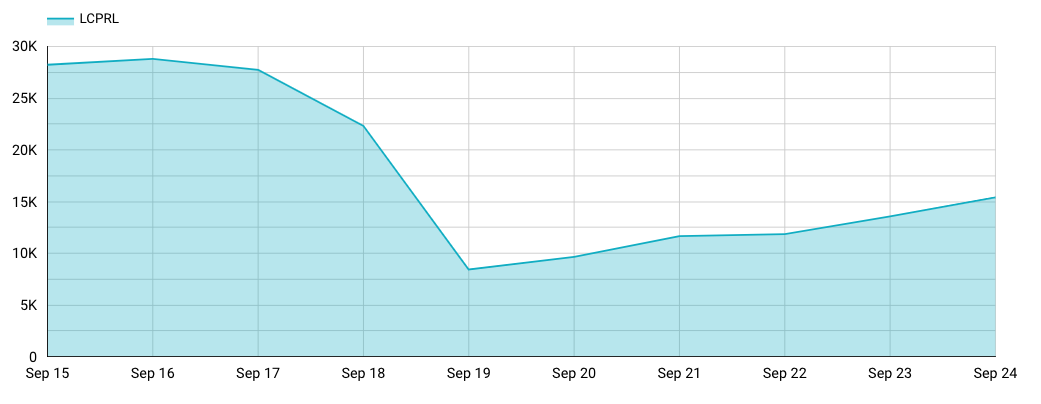
Liberty Cablevision, the largest AS on the island in terms of host count, is well known across the island as an Internet Service Provider (ISP) and mobile service provider.
On September 17, prior to Fiona making landfall, there were 27,745 hosts online. When the hurricane reached Puerto Rico on September 18, the number of connected hosts dropped by 70%, falling to its lowest point in this time period on September 19, with only 8,433 hosts remaining online.
AS10396: COQUI-NET | DATACOM CARIBE / Claro PR
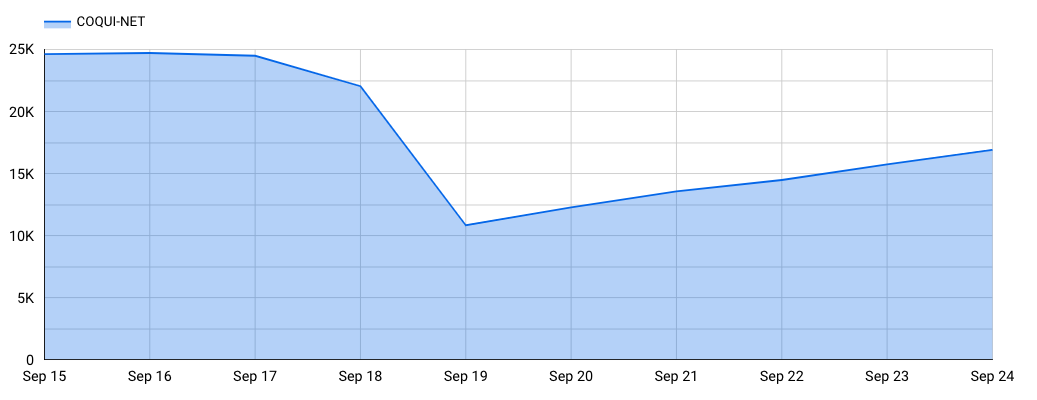
COQUI-NET, named after a small frog native to Puerto Rico, is owned by DATACOM CARIBE / Claro PR. Claro is a popular mobile provider whose offerings include WiFi hotspots, prepaid phone services, and a video streaming service.
The drop in hosts observed here roughly follows the trajectory for Liberty Cablevision, shown above. On September 17, Claro PR had 24,495 hosts online. By September 19, that number had fallen by 56% to 10,835.
University networks
AS5786: UPRENET | University of Puerto Rico
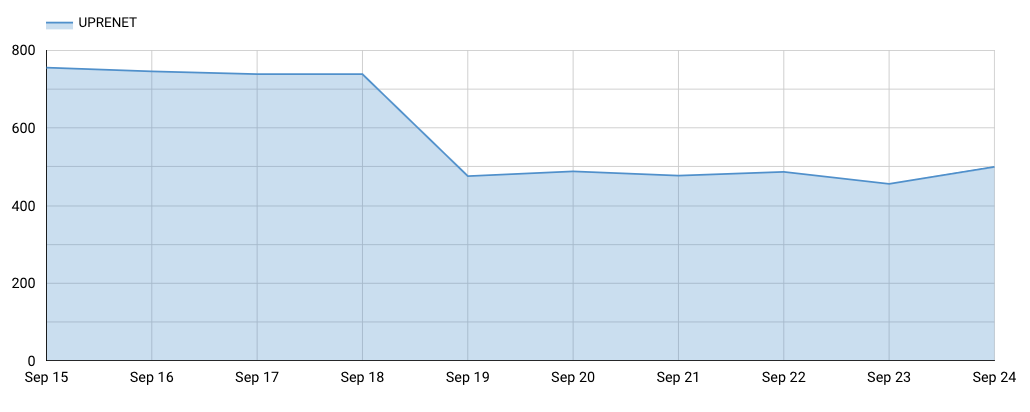
The University of Puerto Rico is the primary public university system with 11 campuses located across the island. On September 17, Censys observed 739 hosts online, and this held constant through September 18. However, by September 19, the number of hosts had dropped by 36% to 476.
AS32189: SAGRADO | Universidad del Sagrado Corazón
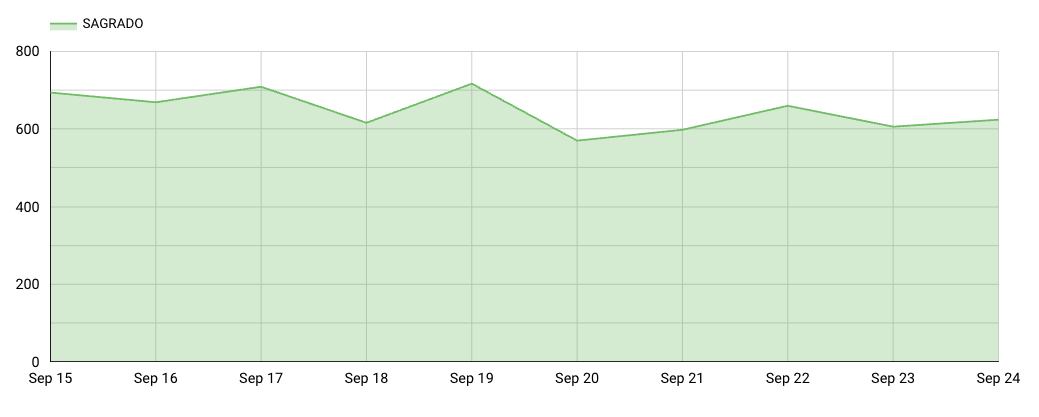
Sacred Heart University is a private Catholic school in San Juan. On September 17, we observed 709 hosts online, followed by a dip of 13% to 616 on September 18.
Of the more than 100 autonomous systems we examined, only 9 had more hosts on September 19, following the storm, than on September 18, when the storm arrived. In those cases, there were typically one to two more hosts online. However, this AS in particular had the largest increase in number of hosts on September 19, when 717 hosts were observed–111 more than the previous day.
Government networks
Each of these networks have far fewer hosts than the commercial and university providers above, and they remained overwhelmingly online and connected in comparison.
AS20372: GOBIERNOPR-AS | Puerto Rican Government
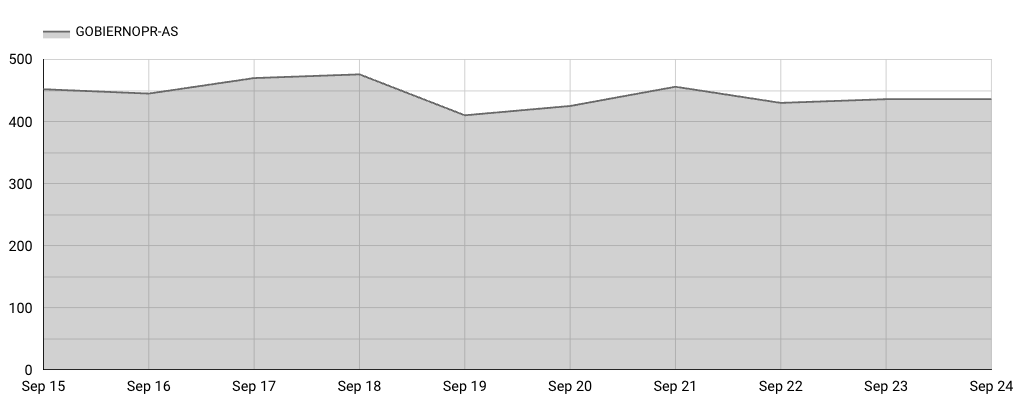
This network hosts services and sites run by Puerto Rico’s government. In the period from September 18 to September 19, the number of hosts dropped from 476 to 410, a 14% decrease. They recovered somewhat by September 21, with 456 hosts online. However, another small dip followed, resulting in 436 hosts online on September 24.
AS23550: PREPA-NETWORKS-LLC | Puerto Rico Electric Power Authority
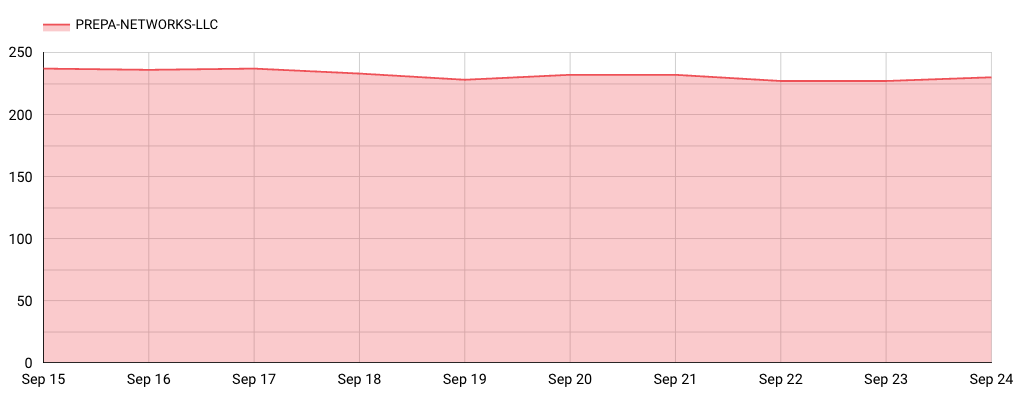
PREPA was responsible for power distribution and transmission in Puerto Rico prior to LUMA’s takeover of these responsibilities. PREPA went into Hurricane Fiona with a peak of 237 hosts online on September 17 and saw only 9 hosts go offline by September 19, for a mere 4% decrease.
Closing thoughts
Infrastructure in Puerto Rico has been fragile for years, but Hurricanes Maria and Fiona have shown the extent to which it needs attention. While power and water are by far the most critical infrastructure services impacted in the aftermath of a storm, we can see from data presented above that the effects of a Fiona or a Maria are wide-ranging.
Regarding Internet connectivity, consumer networks were the most heavily impacted from the storm, while university and government-related hosts maintained somewhat more consistent uptime. While Internet connectivity didn’t drop to zero during Fiona, more importantly, many residents have remained without power, nearly a week and a half after the storm.
For the latest on any of the Autonomous Systems mentioned in this post, follow the links above each graph to their data in Censys Search.





